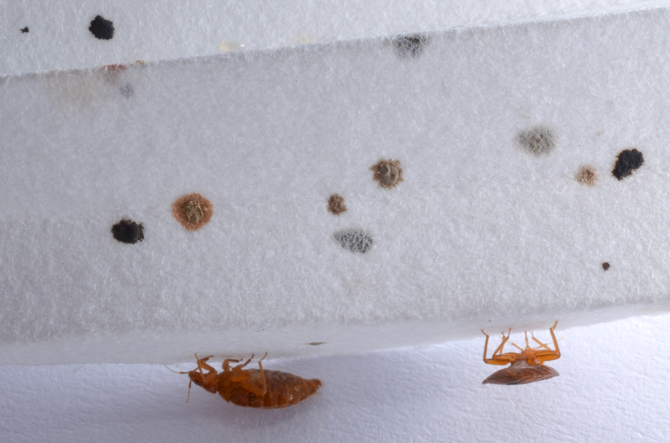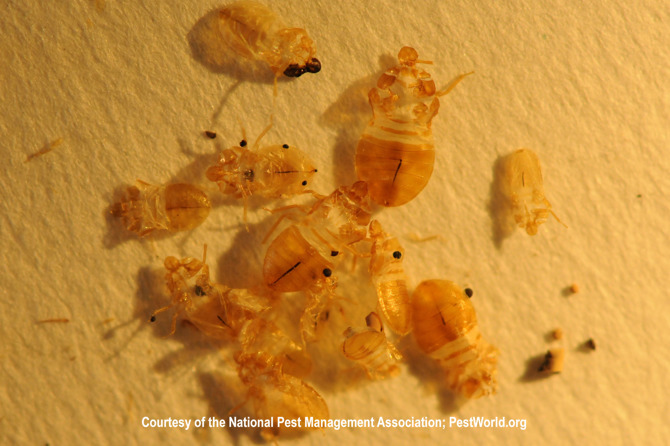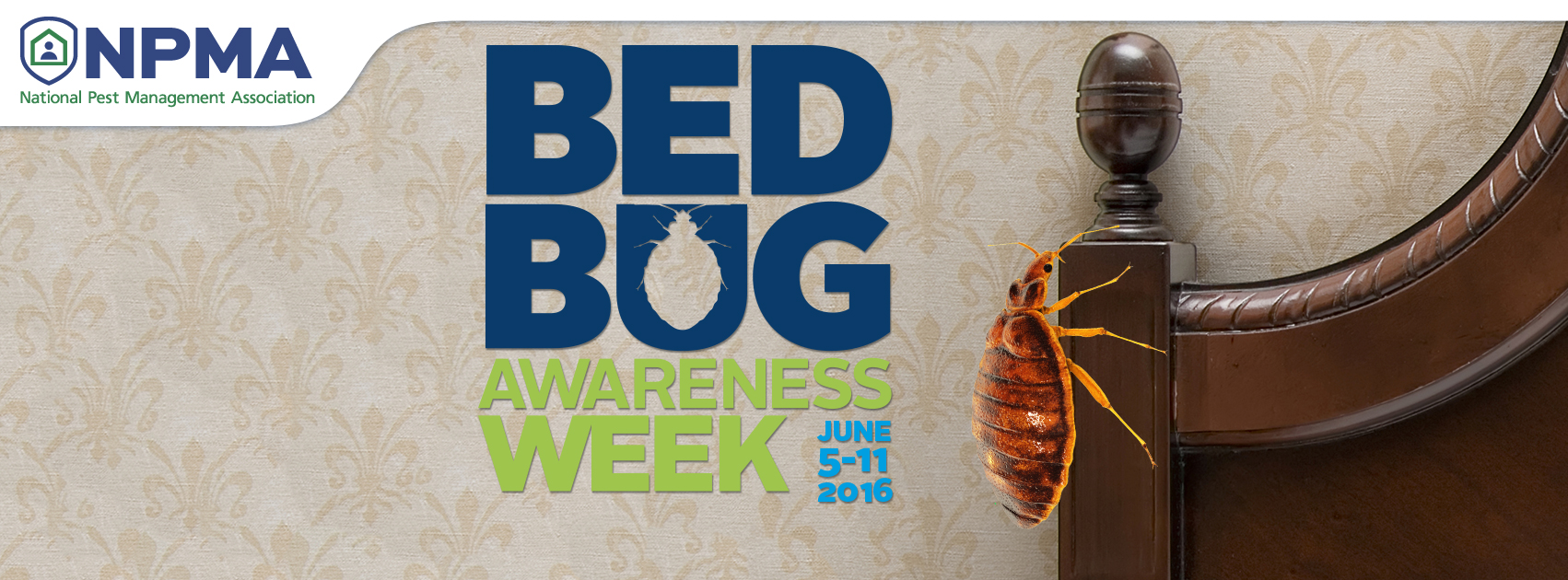Small red to reddish brown fecal spots on mattresses, upholstery or walls

Molt bed bug skins, their white, sticky eggs or empty eggshells

Red, itchy bite marks, especially on the legs, arms and other body parts exposed while sleeping

Very heavily infested areas may have a characteristically sweet odor
Although the actual bite of bed bugs is painless, most people develop an allergic reaction to the saliva (which also acts as a numbing agent) injected by the bug as it feeds. Swelling and itchy, red welts can be signs of a bed bug infestation. However, some people do not have reactions to bed bug bites at all. In addition, bites from other insects, such as mosquitoes, are often mistaken as bed bug bites. Unlike many other pests, bed bugs are not known to spread disease to humans.
If you notice signs of bed bugs or suspect you have a bed bug infestation, you should contact PermaTreat Pest and Termite Control to confirm the infestation and recommend a course of treatment.
Across the country kids are wrapping up the school year and families are planning to pack their bags and travel during the summer months. Whether vacations are planned near or far from home, bed bugs are a key concern. To promote public vigilance and to help quell infestations, the National Pest Management Association (NPMA) has declared June 5-11 to be Bed Bug Awareness Week. PermaTreat is joining NPMA in this important public education effort and encourages travelers to brush up on bed bug basics before hitting the road.
These biting pests are also easily transported back home and use belongings, such as suitcases and boxes to hitchhike. Bed bugs are known to survive in various conditions, so it is essential for travelers to practice caution during and after trips.
In fact, a 2015 study by NPMA and the University of Kentucky found that 99.6 percent of pest control professionals treated for bed bugs in the year prior, with 75 percent reporting bed bugs in hotels and motels.
PermaTreat offers the below advice to travelers to help ensure they don’t bring bed bugs home:
• At hotels, thoroughly inspect the entire room before unpacking, including behind the headboard and in furniture. Pull back the bed sheets and check the mattress seams and box springs for pepper-like stains that may be evidence of bed bug activity.
• If you suspect an infestation or problem, notify management and change rooms immediately. Be sure the new room is not adjacent to or directly below or above the possibly infested room.
• Keep suitcases in plastic trash bags or protective covers during a hotel stay to prevent bed bugs from nesting there. Do not put them on the beds.
• Upon returning home from a trip, inspect all suitcases and other belongings before bringing them into the house.
• Wash all clothes – even those that have not been worn – in hot water and dry them using an extra-hot dryer setting
For more information, Call PermaTreat today!

-
Bed bugs have 5 immature stages. Each stage must consume a blood meal to develop into the next stage. Adult bed bugs must have regular blood meals in order to keep producing eggs.
-
Adult bed bugs are flat and reddish brown in color. They are the size and color of an apple seed.
-
Nymphs, or immature bed bugs, are yellowish in color and semi-transparent. Immature bed bugs range from the size of this comma (,) to the size of this zero (0).
-
Eggs are very tiny, pearl white in color and about the size of this comma (,). You can see their red eyes developing at the age of 5 days.
-
When bed bugs are not feeding (typically during the daylight hours) they gather together in groups.
-
Bed bugs feed only on blood. They may probe your skin several times with their mouth parts before settling in to feed.
-
Female bed bugs will begin laying eggs within a day or two of feeding and mating. Eggs will hatch in 6 to 9 days and, with access to regular blood meals, nymphs will continue to develop.
-
Adult bed bugs will mate very soon after feeding.
-
Seeing and identifying live bed bugs is the most obvious indicator of a bed bug problem.
-
Immature bed bugs have to shed their skin in order to grow. Sometimes the shed skins are the only bed bug evidence you will find, (not the bugs themselves).
-
Each person reacts differently to bed bug bites. Skin reactions are not the best way to identify bed bugs.
-
Bed bugs feed on blood and then excrete it as feces. This feces is a common indicator of a bed bug presence.
-
Storing furniture or bringing home used furniture is a common way to get bed bugs.
-
Friends and family coming to visit may also have hitchhiking bed bugs on their belongings.
-
Bed bugs can get from your neighbor's home to your home by climbing thru wall voids.
Bottom line…. bed bug infestations are a serious problem for any home owner or business. If you think you have bed bugs contact your local pest control professional.
Click here to learn more about bed bug control.






































































